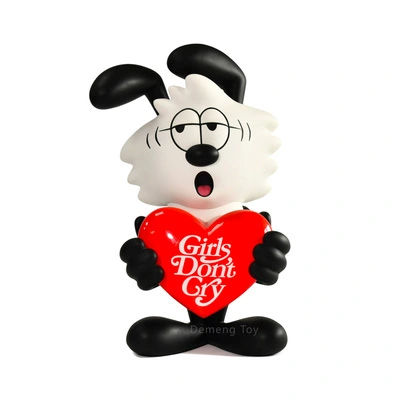Classic artistry collectible Exclusive Character Model

Dive into the fascinating world of custom action figures and discover your hidden artistic talents!
Seasoned or starting out, this walkthrough arms you with artistic methods and ecommerce strategies for figures.
- Open with a product brief that covers character design, cost, and sales channel decisions.
- Secure bases that fit your design goals—proportionality, poseability, and material friendliness.
- Refine brushwork, airbrushing, and weathering to deliver gallery-quality figure finishes.
- Play with anatomical tweaks, fabric details, and added gear to make truly unique characters.
- Exhibit finished pieces at trade shows, online galleries, and in targeted ads to reach collectors.

Make & Market: DIY Action Figures for Hobbyists and Sellers
Begin sculpting custom figures that combine artistic merit with commercial viability for your shop.
- Kick off with a detailed character brief—look, lore, and target buyer—to shape design choices.
- Produce concept art and turnaround sheets that inform every stage of creation and listing.
- Prepare workbench supplies: putty, sculpt tools, adhesives, and a selection of paints and varnishes.
- Craft fine details with small tools and magnification to achieve high-quality tactile finishes.
- Adopt techniques like wet blending, stippling, and micro-highlighting for premium finishes.
Figure Modding Essentials: Tricks for One-of-a-Kind Customs
Want to transform mass figures? Custom modifications can produce collectible items with premium pricing.
Begin with a strong donor and map changes that will most improve the figure’s sellability.
* **Sculpting:** Choose sculpting compounds that cure hard and can be sanded for a smooth finish.
* **Painting:** Master priming, Action Figure layering, and finishing for paint jobs that attract buyers and collectors.
* **Accessories:** {Get creative with found objects and spare parts to craft unique weapons and stands.|Repurpose tiny components and kitbash parts to create distinctive props and display bases.|Combine printed parts, metal bits, and kitbashed pieces for specialty accessories.|Use 3D-printed or scratch-built accessories to increase perceived value and uniqueness.|Craft accessories from small-scale materials or print custom items to enhance desirability.|Invent accessories by converting everyday items into miniature props that pop on shelves.|Design removable and interchangeable accessories to offer collectors customization options.|Produce themed accessory sets that pair with figures to boost bundle sales and interest.|
Action Figure Manufacturing: Bringing Imagination to Life
Artists build prototypes then collaborate with engineers to ready molds and production lines.
Manufacturers inject materials into molds, finish parts with paint, and assemble articulated figures for retail.
Successful figures blend imaginative design, meticulous finishing, and reliable manufacturing processes.

Design Principles for Custom Action Figures
Custom action figures are miniature artworks that demand both artistic vision and technical skill.
Follow disciplined steps—plan, sculpt, refine, paint, seal—to elevate a custom figure from hobby to product.
Five Tools That Transform Your Customizing Workflow
- A precision micro-tool set for the meticulous shaping needed in custom work.
- Reliable modeling putties that are easy to shape and sand for production-quality parts.
- A broad acrylic paint selection including metallics, washes, and translucent glazes.
- Specialized fine brushes for weathering, glazing, and minute facial features.
- A sharp modeling blade for clean cuts and profile defining during sculpting.
Figure Construction Essentials
Explore the core components—from frame to finish—that define a collectible action figure.
Begin with the main torso and shell, which can be molded from ABS, PVC, or resin for strength.
Next comes the joint system: ball joints, ratchets, and hinges that enable expressive posing.
Character accessories, from capes to armor, provide narrative context and merchandising value.
Finish work—painting, weathering, and sealing—creates the final visual impact for collectors.
Achieve Flawless Finishes: Painting Tips for Custom Figures
To achieve pro finishes, clean and sand parts carefully and prime to ensure paint adhesion.
Consider contrast, saturation, and lighting when choosing colors, and thin paints for smooth coats.
Use fine brushes for detail work and layer paints gradually—build highlights and shadows step by step.
A final varnish protects painted surfaces and defines the figure’s final sheen for display and photos.
Artist Spotlight: Interviews with Leading Figure Sculptors
Learn how professionals solve sculpting and production challenges in candid studio interviews.

Unleash Your Toy Trove!
Attention collectors: display vintage and custom pieces, trade tips, and join competitions.
Unite with fellow collectors to share builds, host contests, and celebrate the customing craft.
- Tap into community knowledge—how-to videos, live demos, and shared guides help you improve.
- Compete in exhibitions and online contests to win accolades and attract commissioning clients.
From novice to pro, community involvement fosters growth, exposure, and potential sales opportunities.
Choosing a Factory for Production-Ready Figures
Selecting a producer involves reviewing portfolio, material choices, and their capacity for small runs or scaling.
- Pay attention to scale, pose accuracy, and joint tolerances when evaluating samples.
- Emphasize manufacturers who can source premium plastics, resins, and paint systems for collectibles.

Choosing well impacts consistency, lead times, and your reputation with collectors and retailers.